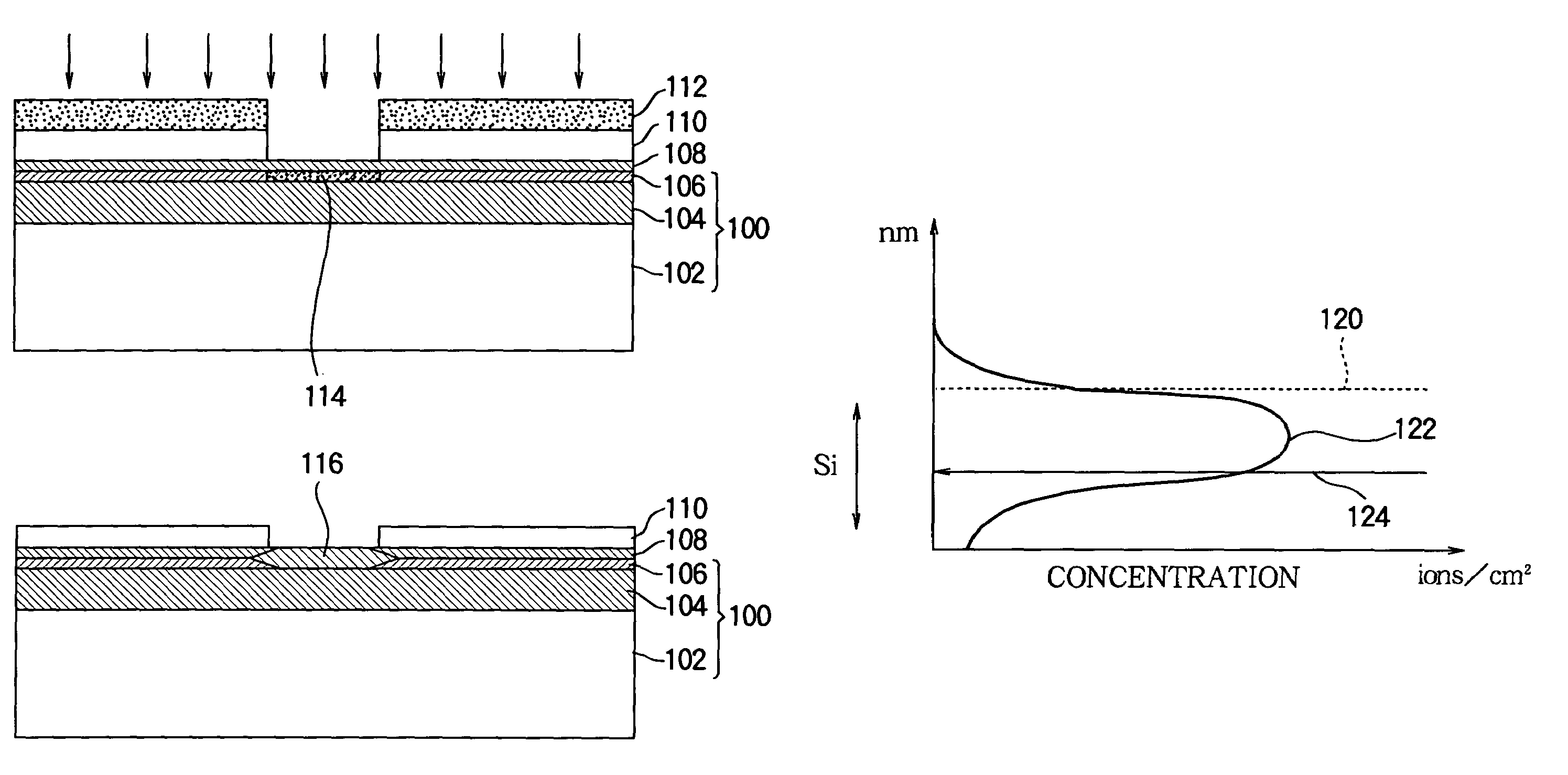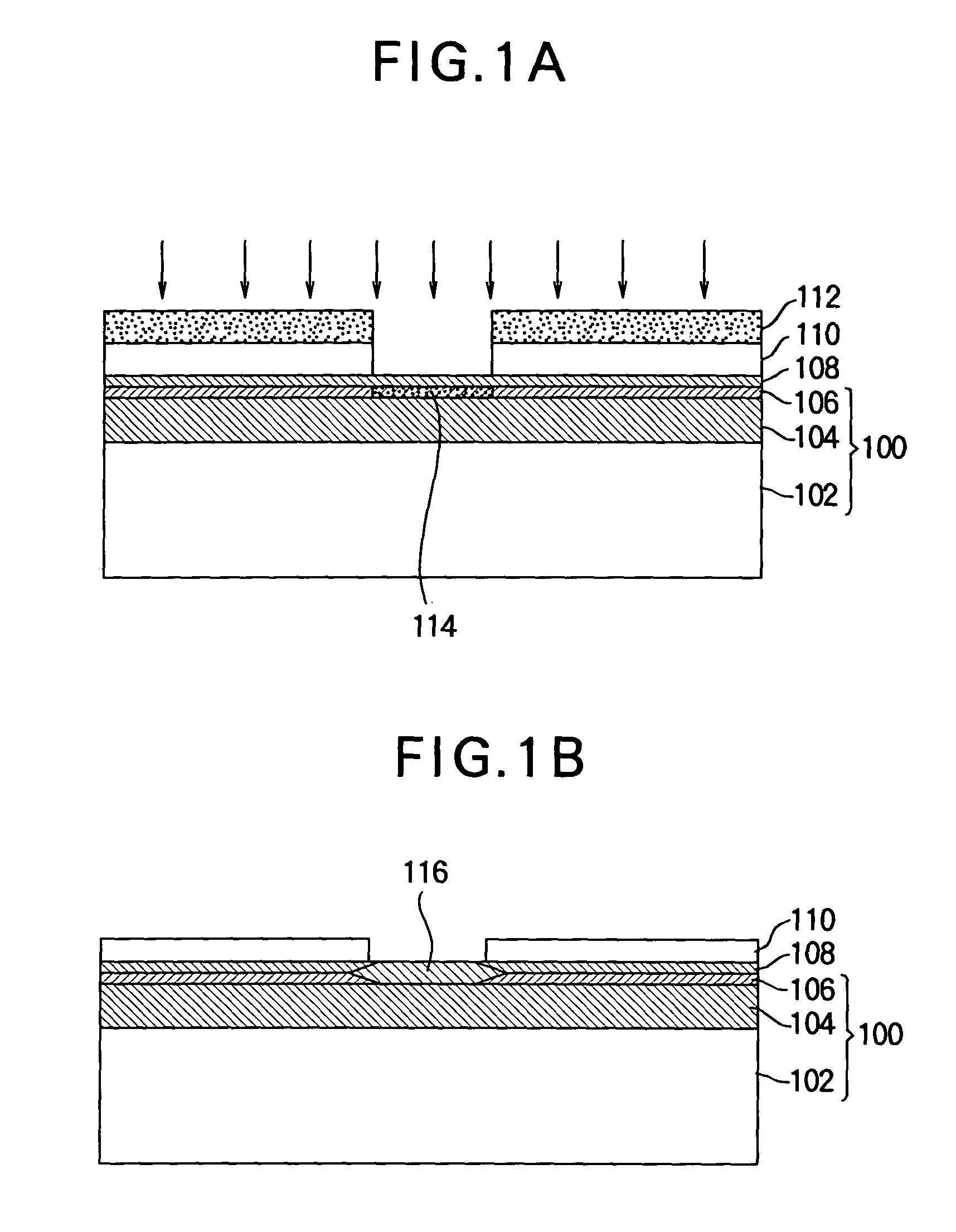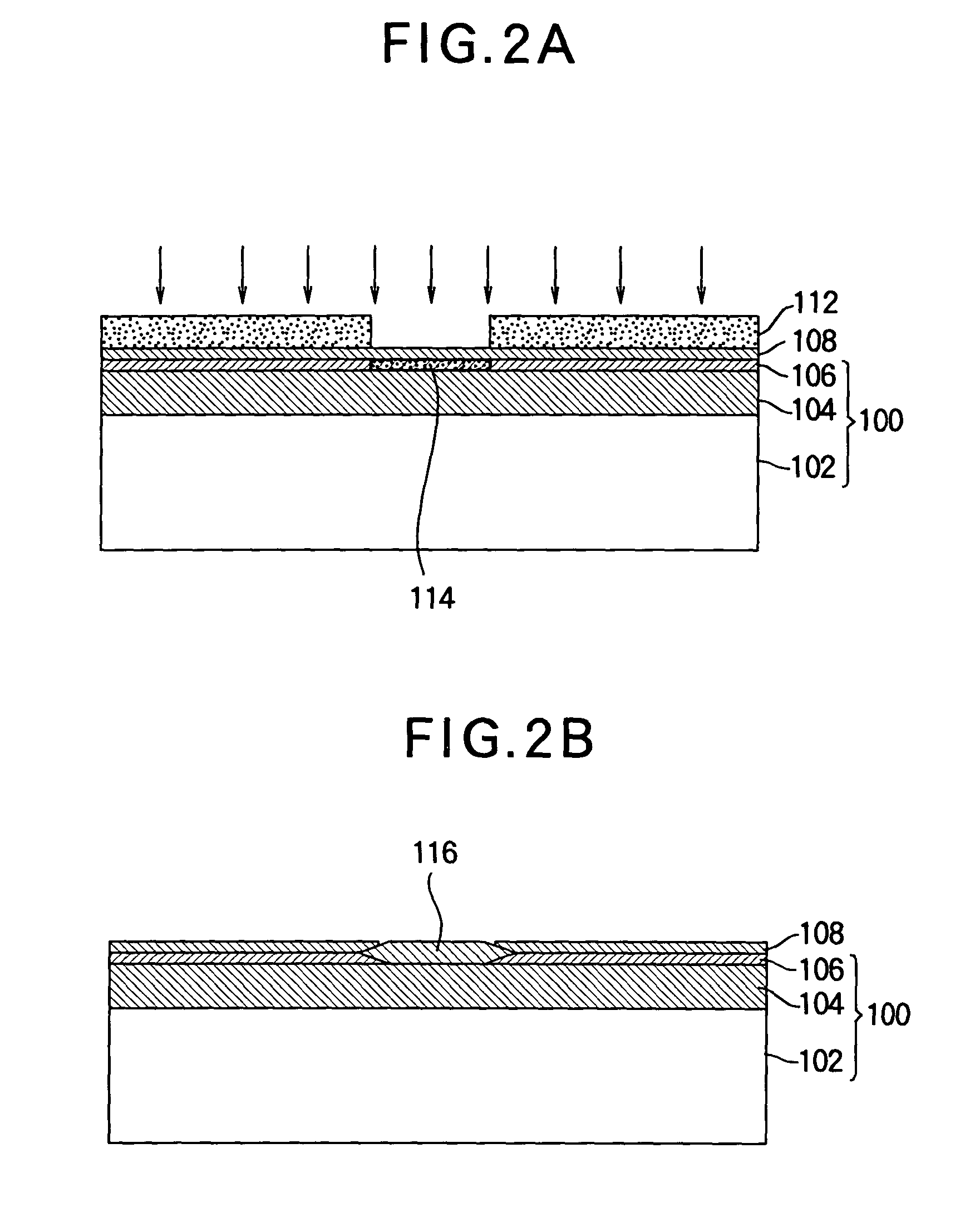Semiconductor device fabrication method using oxygen ion implantation
a technology of oxygen ion implantation and semiconductor devices, which is applied in semiconductor/solid-state device manufacturing, basic electric elements, electric apparatus, etc., can solve the problems of degrading the electrical characteristics of circuit elements, the locos process and its variants do not work well in devices, and the sti cannot be used in fully depleted soi devices, etc., and achieves the effect of easy formation
- Summary
- Abstract
- Description
- Claims
- Application Information
AI Technical Summary
Benefits of technology
Problems solved by technology
Method used
Image
Examples
Embodiment Construction
[0021]Embodiments of the invention will be described with reference to the drawings, in which like elements are indicated by like reference numerals.
[0022]FIGS. 1A and 1B illustrate the isolation steps in a first embodiment of the invention. An SOI substrate 100 comprising a silicon supporting substrate 102, a buried oxide layer 104, and a silicon layer 106 twenty to seventy nanometers thick is thermally oxidized to form a sacrificial oxide film or pad oxide film 108 five to fifty nanometers thick. This thermal oxidation process reduces the thickness of the silicon layer 106 by an amount that can be precalculated; the thicknesses of the silicon layer 106 and pad oxide film 108 should be selected so that the remaining thickness of the silicon layer 106 and the thickness of the pad oxide film 108 are adequate for later fabrication steps. Next, a nitride film 110 ten to three hundred fifty nanometers thick is formed by chemical vapor deposition (CVD). The purpose of the pad oxide film ...
PUM
 Login to View More
Login to View More Abstract
Description
Claims
Application Information
 Login to View More
Login to View More - R&D
- Intellectual Property
- Life Sciences
- Materials
- Tech Scout
- Unparalleled Data Quality
- Higher Quality Content
- 60% Fewer Hallucinations
Browse by: Latest US Patents, China's latest patents, Technical Efficacy Thesaurus, Application Domain, Technology Topic, Popular Technical Reports.
© 2025 PatSnap. All rights reserved.Legal|Privacy policy|Modern Slavery Act Transparency Statement|Sitemap|About US| Contact US: help@patsnap.com



